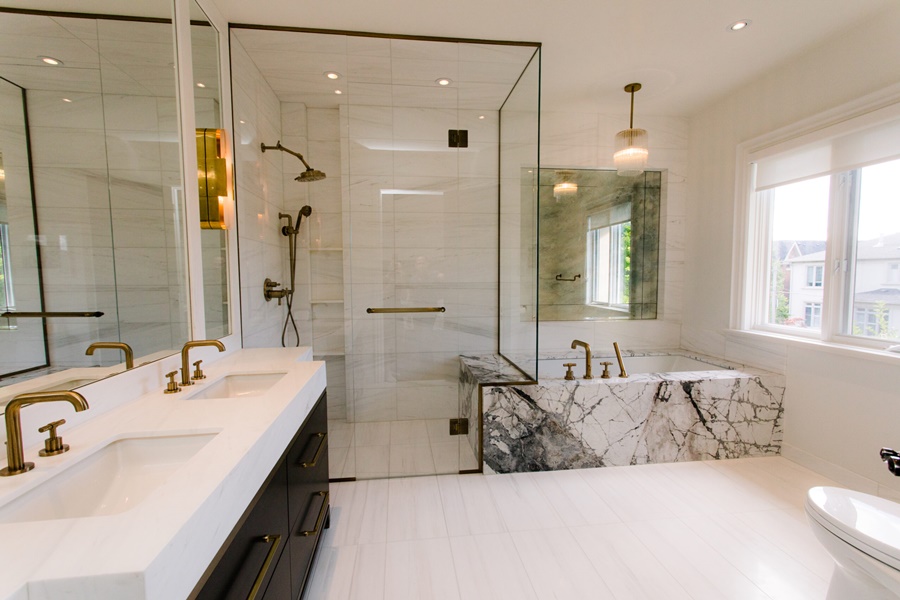Bathroom remodeling is one of the most popular and costly home improvement projects. While the final cost of a remodel can vary based on the scope and scale of the changes, there is one component that consistently ranks as the most expensive: plumbing and labor-intensive installations. In this comprehensive guide, we explore exactly what drives up the cost, why plumbing tops the list, and how to manage expenses without compromising quality.
Understanding Bathroom Remodel Costs
Bathroom remodeling expenses are broken down into several key categories: labor, materials, permits, and design. The total cost of a bathroom renovation typically ranges from $10,000 to $30,000, with high-end remodels reaching up to $50,000 or more. Among these components, labor often constitutes 40% to 65% of the total cost.
#1 Most Expensive Part: Plumbing System Overhaul
Plumbing is the costliest aspect of a bathroom remodel, especially when layout changes are involved. Relocating major fixtures like the toilet, bathtub, or shower requires moving drain lines, rerouting water supply lines, and sometimes updating old pipes that no longer meet building codes.
Average Plumbing Cost: $2,000–$6,000
Repositioning Fixtures: Adds $1,000–$5,000 per fixture
Upgrading Pipes (Copper or PEX): $4 to $10 per linear foot
When walls and floors are opened for plumbing work, it triggers a cascade of additional costs, including tile replacement, drywall repair, and waterproofing.
Custom Showers and Tubs: Luxury at a Premium
Installing custom walk-in showers, jacuzzis, or freestanding tubs often leads to skyrocketing expenses. These aren’t just aesthetic upgrades—they require specialized plumbing, custom tiling, glass enclosures, and advanced waterproofing systems.
Custom Shower Install: $5,000–$15,000
Freestanding Bathtub: $1,500–$4,000 (excluding plumbing)
Steam Shower Units: $3,000–$10,000
Incorporating these luxury features demands professional-grade craftsmanship, contributing significantly to labor and materials cost.
Tile Work and Waterproofing: A Costly Necessity
High-end tile work is another major contributor to remodel costs, especially in wet zones like the shower walls, floors, and backsplashes. Labor for precision tile cutting and layout design is intensive and requires expert installation to ensure durability and water resistance.
Ceramic/Porcelain Tile: $7–$25 per square foot installed
Natural Stone Tile: $15–$50 per square foot
Waterproof Membranes: $500–$2,000 depending on coverage area
These costs can climb even higher when using mosaic tiles, in-floor heating, or custom patterns.
Vanities, Cabinetry, and Countertops
Custom or semi-custom vanities often include stone countertops, integrated sinks, and high-end cabinetry finishes. While not as expensive as plumbing, these features can still absorb a large portion of the remodel budget.
Custom Vanity Unit: $1,200–$5,000
Quartz or Granite Countertops: $75–$200 per square foot
Custom Cabinetry: $500–$2,500 per unit
Cabinet materials and hardware options also add up. Opting for soft-close drawers, solid wood, or water-resistant laminates raises costs further.
Electrical and Lighting Upgrades
Lighting and electrical enhancements often get overlooked in the planning stage, yet they add sophistication and safety to any remodel. Adding GFCI outlets, vanity lighting, and under-cabinet lighting requires skilled electricians.
Basic Electrical Work: $1,000–$3,000
New Light Fixtures: $200–$2,000 each
Smart Lighting & Fans: $1,500–$4,000
High-tech integrations such as Bluetooth speakers, LED mood lighting, and automated mirrors have become trendy and costly additions.
Permits and Compliance
Depending on the extent of the remodel, building permits and code compliance fees can range from $300 to $1,500. These are mandatory in most jurisdictions, particularly for structural, plumbing, and electrical work.
Skipping permits to save money often leads to penalties, delays, and re-inspection fees, ultimately costing more in the long run.
Design and Consultation Fees
Hiring a professional designer ensures efficient space utilization and a polished aesthetic. However, design services add another layer of cost.
Professional Design Fee: $1,000–$5,000+
3D Renderings & Layouts: $500–$2,000
While optional, design guidance can prevent costly mistakes and reduce rework during construction, ultimately saving money over time.
Hidden Costs That Inflate the Budget
Even the best-planned remodels can encounter unexpected expenses. Hidden issues like mold, structural damage, or asbestos often emerge once demolition begins.
Mold Remediation: $500–$6,000
Structural Repairs: $1,000–$10,000
Asbestos Removal: $1,000–$3,000
These surprises can derail budgets and timelines, especially in older homes.
How to Minimize Bathroom Remodel Costs Without Compromise
While some elements of a remodel are inherently expensive, there are ways to control costs:
Retain existing plumbing locations whenever possible
Opt for prefabricated vanities instead of custom-built
Choose mid-range materials that mimic the look of luxury
Shop seasonal sales on tile and fixtures
Bundle work to reduce labor inefficiencies
DIY non-technical elements like painting or hardware installation
Strategic planning can cut thousands off your budget without sacrificing style or function.
Conclusion
The most expensive part of a bathroom remodel is undoubtedly plumbing and infrastructure work, especially when altering fixture placement. However, combining high-end finishes, custom elements, and labor-intensive tasks like tiling and waterproofing can quickly rival or surpass plumbing costs. A cost-effective remodel demands a balance between aesthetic goals, functionality, and budget discipline. Invest in skilled professionals where it matters most and make thoughtful choices to maximize both ROI and comfort.

